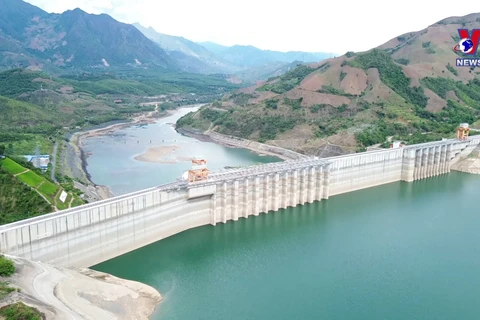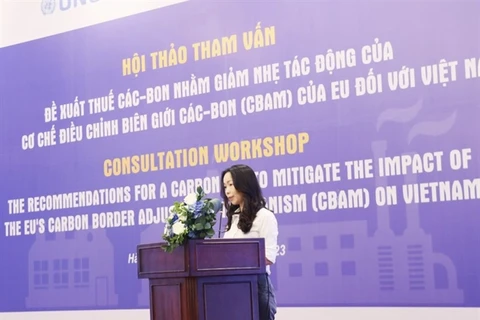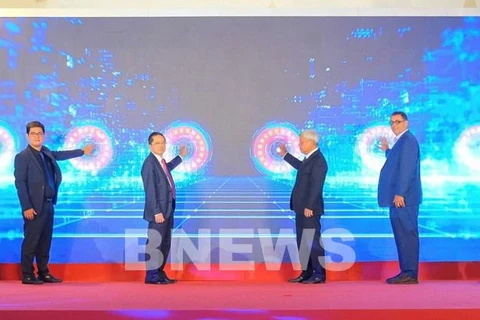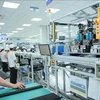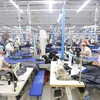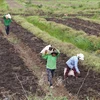 Many businesses have upgraded their technologies to improve the competitiveness of their products (Photo: VietnamPlus)
Many businesses have upgraded their technologies to improve the competitiveness of their products (Photo: VietnamPlus) Hanoi (VNA) – Responding to the European Union (EU)’s Carbon Border Adjustment Mechanism (CBAM) will help Vietnamese firms avoid being left behind in the process of developing the sustainable value chain and the green economy, according to experts.
Under the mechanism, from October 1, the EU's trading partners have to report greenhouse gas (GHG) emissions embedded in six carbon-intensive exports, which consist of steel, cement, aluminum, fertilizer, hydrogen, and electricity.
From 2026, they will also be required to purchase CBAM certificates to cover the GHG footprint, and the prices of CBAM certificates will be calculated based on the weekly average auction price of EU, ETS allowances.
Previously, many held that the CBAM will not greatly affect Vietnam’s exports to the EU, as the four products that CBAM directly impacts - steel, cement, aluminum, fertilizer, are not strong exports of Vietnam to the EU market.
However, Nguyen Van Hoi, General Director of the Vietnam Institute of Strategy and Policy for Industry and Trade under the Ministry of Industry and Trade said that in the first eight months of this year, Vietnam’s steel export volume to the EU doubled to 2.31 million tonnes, accounting for 30% of Vietnam’s total steel export volume.
If Vietnamese exports to the EU do not meet criteria and comply with CBAM's roadmap, manufacturers of the six types of goods mentioned above will have to buy "emission certificates," also known as "carbon tax", from the beginning of 2026. The European Commission will evaluate how CBAM works and consider the possibility of expanding its scope to more products and services.
In the long term, the CBAM scale can be expanded to indirect emissions and other sectors as well as carbon-intensive products such as energy, mineral products, the production and processing of some food products like sugar, starch, potato and tomato; the production of textile products; chemicals; and construction.
Nguyen Hoa Cuong, Vice Director of the Central Institute for Economic Management, said Bangladesh's staggering growth in apparel exports over the past few years speaks volumes about how "going green" has paid off commercially.
He urged Vietnam to take action to keep its industries well-prepared for the tax regime. He said meeting CBAM requirements will serve Vietnamese producers well by allowing their products to be sold at a higher price in the EU markets.
Economic expert Vu Dinh Anh said carbon certificates under development in Vietnam and would come into force in the near future. He also said the EU's green regulations would incentivize Vietnamese enterprises to go green and promote legal changes that work in favour of the environment.
 Meeting high standards creates momentum for Vietnamese goods to improve competitiveness (Photo: VietnamPlus)
Meeting high standards creates momentum for Vietnamese goods to improve competitiveness (Photo: VietnamPlus) A team of researchers from the University of Economics under the Hanoi National University was concerned that the CBAM will incur huge carbon-emission-linked costs to Vietnamese enterprises on the horizon.
The team called for measures to help them cut carbon emissions, thereby improving the competitive advantage of their products in the EU market. It also urged policymakers to bring them up to speed on the tax regime and called for a mechanism for carbon pricing in Vietnam.
Meanwhile, Hoi urged enterprises to improve their energy efficiency and cut back on carbon emissions to get the go-ahead to export to the EU markets./.

